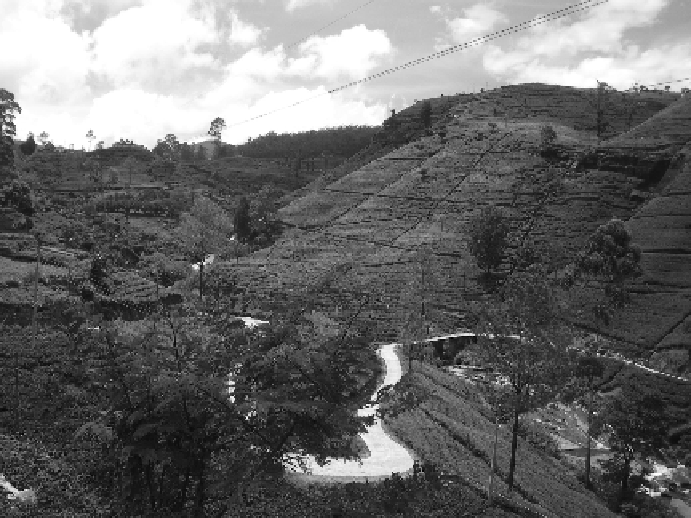Geoscience Reference
In-Depth Information
it reached 22,899 tons and in 1927 it increased up to 10,000 tons (Holsinger
2002). From that period to up to date Sri Lankan tea occupies a special place
in the world market today (Fig. 15.2).
In Sri Lanka, except for tea, the Central Highlands at an elevation over
600 m are exploited mainly for potato and vegetable production. The land
area under potato and vegetable cultivation is around 60,000 ha, which
is comparatively low compared to the area under tea cultivation
(188,966.4 ha) (Perera and Jayasuriya 2008, Holsinger 2002). Therefore,
potato and vegetables are cultivated in the region on an intensive and
commercial scale. Potato, carrots, capsicum and other vegetables have
become common in the highlands during the last two to three decades.
The Sri Lankan Highlands also contribute more than 25% of the livestock
sector. The livestock sector contributes around 1.2% to the national GDP
and livestock primarily provides a crucial source of high quality protein.
In addition, cattle and buffalo are the primary source of renewable and
draught power for a variety of agricultural operations and transport (Perera
and Jayasuriya 2008) (Fig. 15.3).
Figure15.2.
Mackwood's Tea plantation Labokele (Breuste 2010).

Search WWH ::

Custom Search